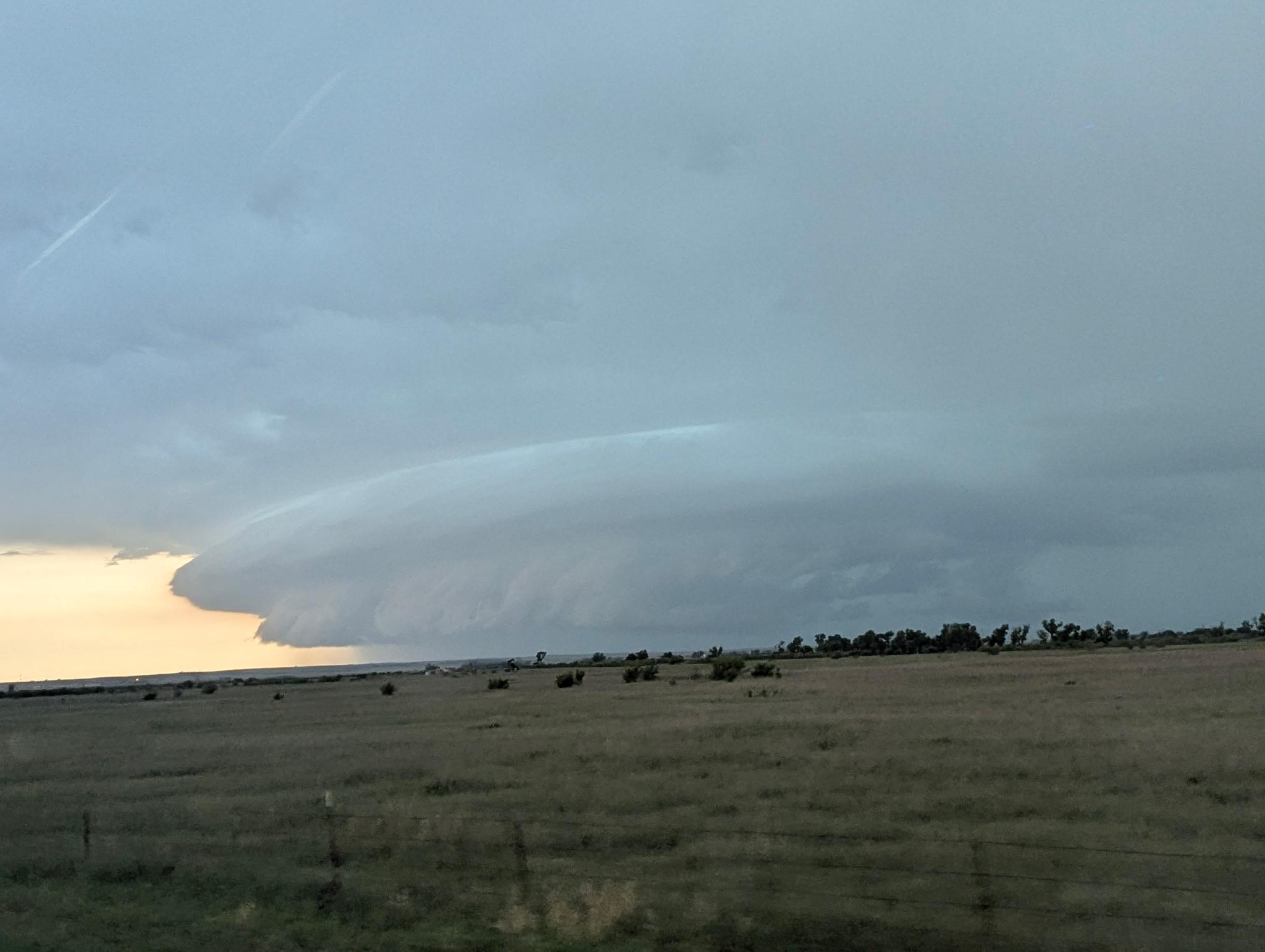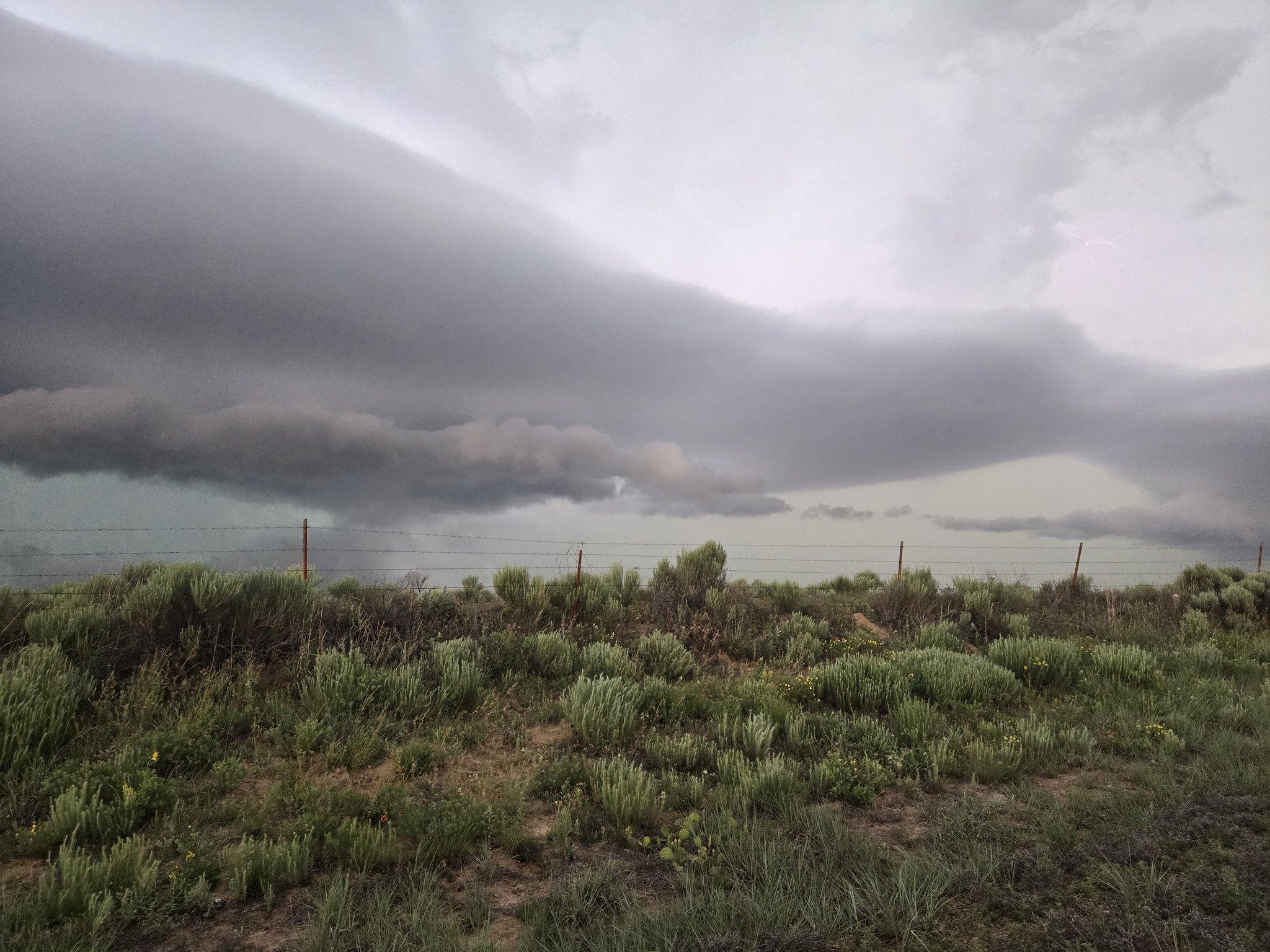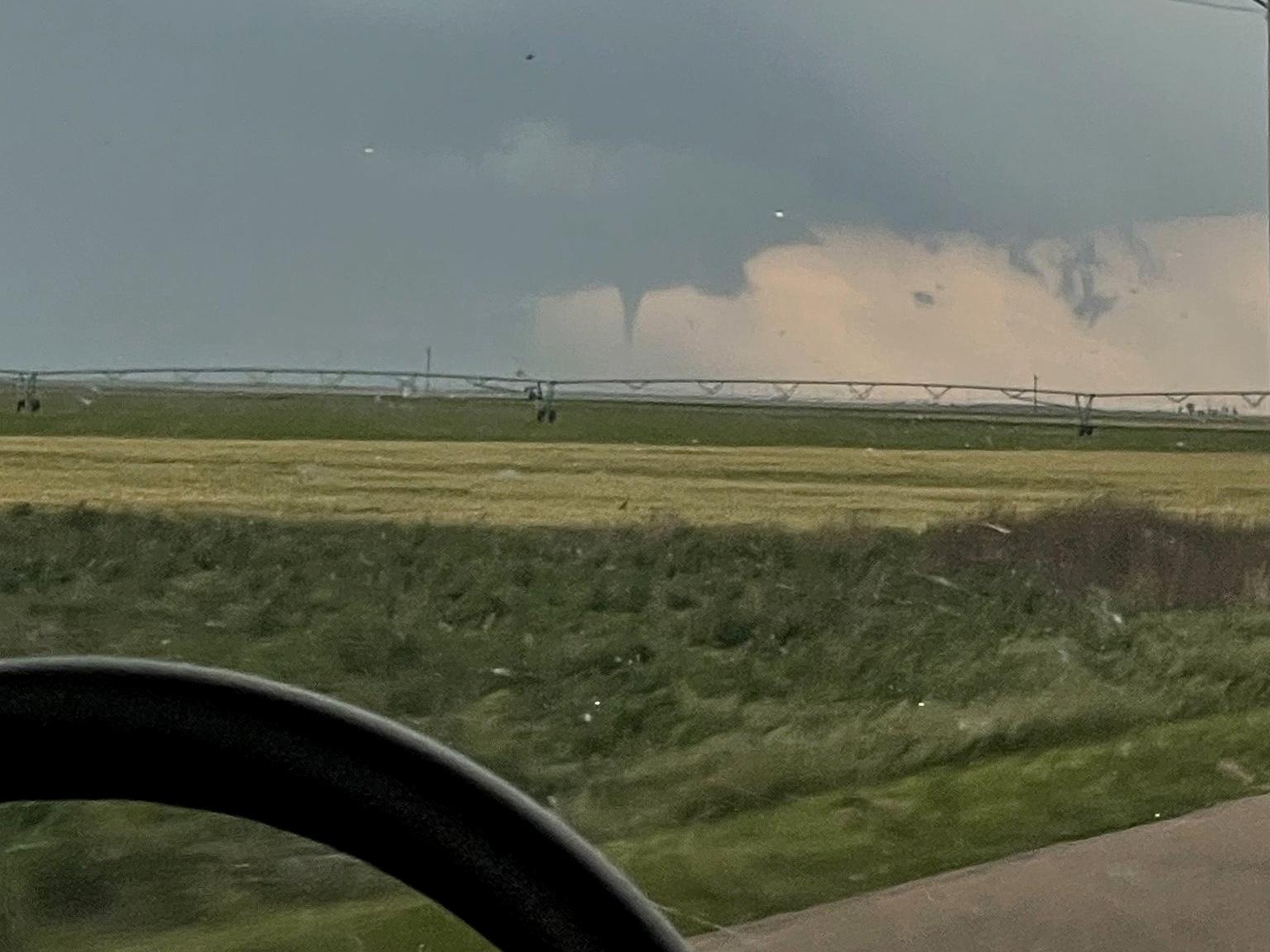SUNY Oswego’s storm-chasing class traveled through southwestern Kansas and captured an image of a suspected tornado south of Plains, Kansas, on May 28. (Photo courtesy of x.com/oswegochasers)
SUNY Oswego's summer 2025 storm-chasing class started with a bang, traveling through southwestern Kansas and the Oklahoma panhandle on May 28 in a thrilling, real-life meteorology experience.
Meteorology professor Scott Steiger launched the Oswego Chasers program in 2007, and it has run most years since.
In an activity combining classroom knowledge and on-the-ground experience, the chasers spotted a possible tornado south of Plains, Kansas, as well as multiple supercells east of nearby Sublette. They then headed into the Oklahoma panhandle, seeing what Steiger deemed a “very likely tornado” as well as supercells and enormous shelf clouds near Laverne.
“This is true field research, in that it teaches students how to observe the weather and how to forecast it,” Steiger explained. “The best way to do the scientific method is to do an observation, make a forecast based on that observation, and compare what you observed with what you forecasted, and that’s exactly what we do.”
The trip started on May 27, when the team of 12 students and four instructors departed Oswego along Lake Ontario, and is forecast to run through June 10. Every morning, the chasers have a meeting where they determine where the best chances of tornadoes are within driving distance, and then set off to study and potentially observe some extreme weather from a safe distance.
Through real-time field observation, launching weather balloons and evaluating their forecasts, students earn experience beyond what is available with even the best classroom equipment.
The 2023 edition took the Oswego Chasers as far as the Texas Panhandle and eastern New Mexico, but the route depends upon forecasts and manageable driving conditions.
Students split into three groups in charge of different aspects of the trip: the logistics team, the equipment team and the forecast team. Since teams are set up in a rotation, students are able to experience each team.
The forecast team studies atmospheric conditions each morning and determines where the group heads next. The logistics team is in charge of navigation, filling the van with gas, cleaning the windows and other tasks. The equipment team was in charge of the weather balloons, including filling them with helium, launching, attaching the radiosonde device and observation.
The team documents their chases on X via the x.com/oswegochasers account.

SUNY Oswego’s storm-chasing class observed this massive supercell near Laverne, Oklahoma, on May 28. (Photo courtesy of x.com/oswegochasers)

SUNY Oswego’s storm-chasing class photographed this large shelf cloud near Laverne, Oklahoma, on May 28.(Photo courtesy of x.com/oswegochasers)




